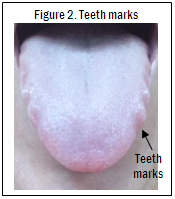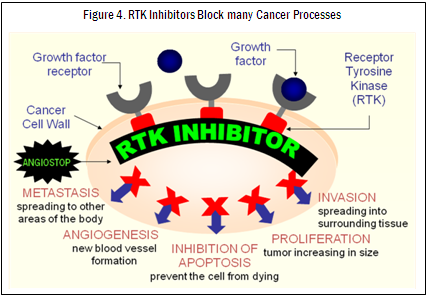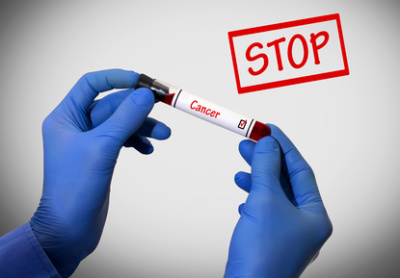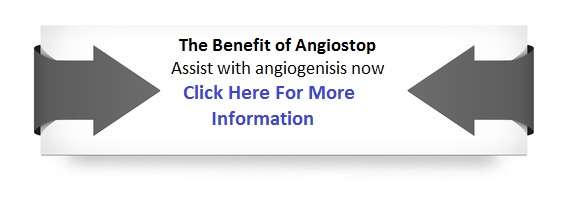Immune Support, Uncategorized
The Steps For Early Detection And Prevention Of Cancer
This is an article shared from Dr. Tsu-Tsair Chi of Chi’s Enterprise. This is the invaluable information for you to understand that everybody is looking for. This also provides beneficial self assessment tools.
Enjoy!
Glen Depke, Traditional Naturopath
by Dr Tsu-tsair Chi
Did you know that all of us have a 27% risk of developing cancer in our lifetime? Of course, the older we are, the higher this risk gets. Statistics show that more males (194 for every 100K) than females (116 for every 100K) develop cancer. So preventing cancer early enough is of vital importance. But how do we do that?
Knowing the causes and risk factors of cancer is one way. One of the underlying causes of cancer is that maybe we are born with poor health that predisposes us to cancer. This may be genetic in nature or perhaps the mother had health issues while she was pregnant and passed that on to the child. This is often related to endocrine or hormonal problems, which would explain why studies show that 40% of women between 40-50 years old have microscopic breast tumors, 50% of men 50-60 years old have microscopic prostate tumors and 100% of people over 70 years old have microscopic thyroid tumors. These are all estrogen-related cancers.
There are many risk factors of cancer that we know of: smoking, obesity, lifestyle or habits are just some that are most likely familiar. Depression, too, increases the risk because it can lower your immunity.
Eliminating these factors may minimize cancer risk but it is even more important to know early signs of cancer so that we can start to suppress it before it gets worse.
 Cancer takes about 5 to 10 years to become clinically detectable. By then, it has most likely progressed to an advanced stage and harder to control. Cancer cells grow fast; they double every 9 hours (as opposed to normal cells which take 3 days to double). So we really must detect cancer early enough so that we can take steps to control it effectively.
The fingernails and tongue can give us early clues of cancer.
Up to 80% of cancer patients have missing lunulae (Figure 1) and have teeth marks on the tongue (Figure 2). Having these is already an indication of cancer risk, especially if you also have cold hands and feet. What kind of cancer it is depends on other physical markers or symptoms. Dr. Chi’s Fingernail and Tongue Analysis book details these markers.
Cancer takes about 5 to 10 years to become clinically detectable. By then, it has most likely progressed to an advanced stage and harder to control. Cancer cells grow fast; they double every 9 hours (as opposed to normal cells which take 3 days to double). So we really must detect cancer early enough so that we can take steps to control it effectively.
The fingernails and tongue can give us early clues of cancer.
Up to 80% of cancer patients have missing lunulae (Figure 1) and have teeth marks on the tongue (Figure 2). Having these is already an indication of cancer risk, especially if you also have cold hands and feet. What kind of cancer it is depends on other physical markers or symptoms. Dr. Chi’s Fingernail and Tongue Analysis book details these markers.

 LACK OF LUNULAE
The lunulae are white half crescents on the base of the nails that indicate your circulation (Figure 1). Normally, you should have 8 of them, except on the pinkies. If you have less than 8, it means you are already starting to have poor circulation. If you have less than 4 lunulae, then this really is a sign of very poor circulation and you should start preventing cancer. Up to 80% of cancer patients have lunulae on the thumbs only.
Poor circulation fuels angiogenesis, the process of new blood vessel formation which drives cancer growth. When there is not enough circulation, the body will try to compensate for this by producing more new blood vessels (process of angiogenesis); however, if blood flow is slow, it allows cancer cells to easily attach to other tissues and organs.
Dr. William Li, MD, President of the Angiogenesis Foundation, spoke at the TED Convention in 2010 and explained that cancers start out as microscopic tumors that are waiting for blood supply so they can grow. But once angiogenesis is triggered and blood vessels start feeding the tumor, the cancer can grow exponentially up to 16,000 times faster.
Microscopic cancer cells want to grow so they signal the body to release angiogenic factors (natural fertilizers like VEGF, EGF, IGF, FGF, etc. which will be explained later) that promote more blood vessel formation, making them grow (#1 and #2 in Figure 3). The blood vessels that are feeding the tumor also allow the cancer to exit into the circulation, invade other tissues and metastasize (#3 in Figure 3). This progression from microscopic cancer cells to cancer growth and metastasis can take about 5 to 10 years. Usually it is at this late stage that cancer is diagnosed.
LACK OF LUNULAE
The lunulae are white half crescents on the base of the nails that indicate your circulation (Figure 1). Normally, you should have 8 of them, except on the pinkies. If you have less than 8, it means you are already starting to have poor circulation. If you have less than 4 lunulae, then this really is a sign of very poor circulation and you should start preventing cancer. Up to 80% of cancer patients have lunulae on the thumbs only.
Poor circulation fuels angiogenesis, the process of new blood vessel formation which drives cancer growth. When there is not enough circulation, the body will try to compensate for this by producing more new blood vessels (process of angiogenesis); however, if blood flow is slow, it allows cancer cells to easily attach to other tissues and organs.
Dr. William Li, MD, President of the Angiogenesis Foundation, spoke at the TED Convention in 2010 and explained that cancers start out as microscopic tumors that are waiting for blood supply so they can grow. But once angiogenesis is triggered and blood vessels start feeding the tumor, the cancer can grow exponentially up to 16,000 times faster.
Microscopic cancer cells want to grow so they signal the body to release angiogenic factors (natural fertilizers like VEGF, EGF, IGF, FGF, etc. which will be explained later) that promote more blood vessel formation, making them grow (#1 and #2 in Figure 3). The blood vessels that are feeding the tumor also allow the cancer to exit into the circulation, invade other tissues and metastasize (#3 in Figure 3). This progression from microscopic cancer cells to cancer growth and metastasis can take about 5 to 10 years. Usually it is at this late stage that cancer is diagnosed.
 So it is really important to look at your lunulae as an early warning sign of cancer and angiogenesis. If you had moons on your nails before and they disappear, especially if you have cold hands and feet, this is not a good sign. If you have 6 or 7 lunulae, you need to improve your circulation. If you only have less than 2 lunulae left, it is dangerous. It means you have an increased risk of angiogenesis in your body and therefore your cancer chance is higher.
TEETH MARKS
Teeth marks are indentations on the edges of your tongue (Figure 2) and signify insulin resistance. This means that once food and water are digested, nutrients and sugar are unable to go to their target tissues or organs for utilization. Cancer depends on sugar to grow. When you have insulin resistance or diabetes, you are unable to process sugar properly so you have higher levels of it feeding the cancer. This explains why many cancer patients show teeth marks.
If you also have other signs of insulin resistance, then you need to be aware of your risk for cancer. You can check your A1c level, which would tell you if you are insulin resistant or diabetic. But if you do not know your A1c level, then you can look for these physical signs:
So it is really important to look at your lunulae as an early warning sign of cancer and angiogenesis. If you had moons on your nails before and they disappear, especially if you have cold hands and feet, this is not a good sign. If you have 6 or 7 lunulae, you need to improve your circulation. If you only have less than 2 lunulae left, it is dangerous. It means you have an increased risk of angiogenesis in your body and therefore your cancer chance is higher.
TEETH MARKS
Teeth marks are indentations on the edges of your tongue (Figure 2) and signify insulin resistance. This means that once food and water are digested, nutrients and sugar are unable to go to their target tissues or organs for utilization. Cancer depends on sugar to grow. When you have insulin resistance or diabetes, you are unable to process sugar properly so you have higher levels of it feeding the cancer. This explains why many cancer patients show teeth marks.
If you also have other signs of insulin resistance, then you need to be aware of your risk for cancer. You can check your A1c level, which would tell you if you are insulin resistant or diabetic. But if you do not know your A1c level, then you can look for these physical signs:
 RTKs are proteins or growth factor receptors found on the surface of cancer cells. When growth factors (blue circles in Figure 4) like VEGF (expressed in 100% of cancer types) attach to RTKs, they trigger unregulated cell growth, leading to various cancer processes like angiogenesis, proliferation, invasion, metastasis and inhibition of apoptosis. Each RTK is involved in different cancer processes (Table 1).
RTKs are proteins or growth factor receptors found on the surface of cancer cells. When growth factors (blue circles in Figure 4) like VEGF (expressed in 100% of cancer types) attach to RTKs, they trigger unregulated cell growth, leading to various cancer processes like angiogenesis, proliferation, invasion, metastasis and inhibition of apoptosis. Each RTK is involved in different cancer processes (Table 1).

Early Signs Of Cancer
What if you knew cancer can be detected very early, even before laboratory tests? Cancer takes about 5 to 10 years to become clinically detectable. By then, it has most likely progressed to an advanced stage and harder to control. Cancer cells grow fast; they double every 9 hours (as opposed to normal cells which take 3 days to double). So we really must detect cancer early enough so that we can take steps to control it effectively.
The fingernails and tongue can give us early clues of cancer.
Up to 80% of cancer patients have missing lunulae (Figure 1) and have teeth marks on the tongue (Figure 2). Having these is already an indication of cancer risk, especially if you also have cold hands and feet. What kind of cancer it is depends on other physical markers or symptoms. Dr. Chi’s Fingernail and Tongue Analysis book details these markers.
Cancer takes about 5 to 10 years to become clinically detectable. By then, it has most likely progressed to an advanced stage and harder to control. Cancer cells grow fast; they double every 9 hours (as opposed to normal cells which take 3 days to double). So we really must detect cancer early enough so that we can take steps to control it effectively.
The fingernails and tongue can give us early clues of cancer.
Up to 80% of cancer patients have missing lunulae (Figure 1) and have teeth marks on the tongue (Figure 2). Having these is already an indication of cancer risk, especially if you also have cold hands and feet. What kind of cancer it is depends on other physical markers or symptoms. Dr. Chi’s Fingernail and Tongue Analysis book details these markers.

 LACK OF LUNULAE
The lunulae are white half crescents on the base of the nails that indicate your circulation (Figure 1). Normally, you should have 8 of them, except on the pinkies. If you have less than 8, it means you are already starting to have poor circulation. If you have less than 4 lunulae, then this really is a sign of very poor circulation and you should start preventing cancer. Up to 80% of cancer patients have lunulae on the thumbs only.
Poor circulation fuels angiogenesis, the process of new blood vessel formation which drives cancer growth. When there is not enough circulation, the body will try to compensate for this by producing more new blood vessels (process of angiogenesis); however, if blood flow is slow, it allows cancer cells to easily attach to other tissues and organs.
Dr. William Li, MD, President of the Angiogenesis Foundation, spoke at the TED Convention in 2010 and explained that cancers start out as microscopic tumors that are waiting for blood supply so they can grow. But once angiogenesis is triggered and blood vessels start feeding the tumor, the cancer can grow exponentially up to 16,000 times faster.
Microscopic cancer cells want to grow so they signal the body to release angiogenic factors (natural fertilizers like VEGF, EGF, IGF, FGF, etc. which will be explained later) that promote more blood vessel formation, making them grow (#1 and #2 in Figure 3). The blood vessels that are feeding the tumor also allow the cancer to exit into the circulation, invade other tissues and metastasize (#3 in Figure 3). This progression from microscopic cancer cells to cancer growth and metastasis can take about 5 to 10 years. Usually it is at this late stage that cancer is diagnosed.
LACK OF LUNULAE
The lunulae are white half crescents on the base of the nails that indicate your circulation (Figure 1). Normally, you should have 8 of them, except on the pinkies. If you have less than 8, it means you are already starting to have poor circulation. If you have less than 4 lunulae, then this really is a sign of very poor circulation and you should start preventing cancer. Up to 80% of cancer patients have lunulae on the thumbs only.
Poor circulation fuels angiogenesis, the process of new blood vessel formation which drives cancer growth. When there is not enough circulation, the body will try to compensate for this by producing more new blood vessels (process of angiogenesis); however, if blood flow is slow, it allows cancer cells to easily attach to other tissues and organs.
Dr. William Li, MD, President of the Angiogenesis Foundation, spoke at the TED Convention in 2010 and explained that cancers start out as microscopic tumors that are waiting for blood supply so they can grow. But once angiogenesis is triggered and blood vessels start feeding the tumor, the cancer can grow exponentially up to 16,000 times faster.
Microscopic cancer cells want to grow so they signal the body to release angiogenic factors (natural fertilizers like VEGF, EGF, IGF, FGF, etc. which will be explained later) that promote more blood vessel formation, making them grow (#1 and #2 in Figure 3). The blood vessels that are feeding the tumor also allow the cancer to exit into the circulation, invade other tissues and metastasize (#3 in Figure 3). This progression from microscopic cancer cells to cancer growth and metastasis can take about 5 to 10 years. Usually it is at this late stage that cancer is diagnosed.
 So it is really important to look at your lunulae as an early warning sign of cancer and angiogenesis. If you had moons on your nails before and they disappear, especially if you have cold hands and feet, this is not a good sign. If you have 6 or 7 lunulae, you need to improve your circulation. If you only have less than 2 lunulae left, it is dangerous. It means you have an increased risk of angiogenesis in your body and therefore your cancer chance is higher.
TEETH MARKS
Teeth marks are indentations on the edges of your tongue (Figure 2) and signify insulin resistance. This means that once food and water are digested, nutrients and sugar are unable to go to their target tissues or organs for utilization. Cancer depends on sugar to grow. When you have insulin resistance or diabetes, you are unable to process sugar properly so you have higher levels of it feeding the cancer. This explains why many cancer patients show teeth marks.
If you also have other signs of insulin resistance, then you need to be aware of your risk for cancer. You can check your A1c level, which would tell you if you are insulin resistant or diabetic. But if you do not know your A1c level, then you can look for these physical signs:
So it is really important to look at your lunulae as an early warning sign of cancer and angiogenesis. If you had moons on your nails before and they disappear, especially if you have cold hands and feet, this is not a good sign. If you have 6 or 7 lunulae, you need to improve your circulation. If you only have less than 2 lunulae left, it is dangerous. It means you have an increased risk of angiogenesis in your body and therefore your cancer chance is higher.
TEETH MARKS
Teeth marks are indentations on the edges of your tongue (Figure 2) and signify insulin resistance. This means that once food and water are digested, nutrients and sugar are unable to go to their target tissues or organs for utilization. Cancer depends on sugar to grow. When you have insulin resistance or diabetes, you are unable to process sugar properly so you have higher levels of it feeding the cancer. This explains why many cancer patients show teeth marks.
If you also have other signs of insulin resistance, then you need to be aware of your risk for cancer. You can check your A1c level, which would tell you if you are insulin resistant or diabetic. But if you do not know your A1c level, then you can look for these physical signs:
- If you are hungry and do not eat right away, you feel shaky, weak, or have a headache, this means you are hypoglycemic, a precursor to insulin resistance or diabetes.
- If the more you eat, the more tired and sleep you are then this can be a sign you are insulin resistant.
 RTKs are proteins or growth factor receptors found on the surface of cancer cells. When growth factors (blue circles in Figure 4) like VEGF (expressed in 100% of cancer types) attach to RTKs, they trigger unregulated cell growth, leading to various cancer processes like angiogenesis, proliferation, invasion, metastasis and inhibition of apoptosis. Each RTK is involved in different cancer processes (Table 1).
RTKs are proteins or growth factor receptors found on the surface of cancer cells. When growth factors (blue circles in Figure 4) like VEGF (expressed in 100% of cancer types) attach to RTKs, they trigger unregulated cell growth, leading to various cancer processes like angiogenesis, proliferation, invasion, metastasis and inhibition of apoptosis. Each RTK is involved in different cancer processes (Table 1).

Angiogenesis, we already know, is the hallmark of cancer and must be suppressed. All 5 RTKs are involved in angiogenesis and so all of them need to be inhibited if you want to stop angiogenesis.
Proliferation occurs when mutations in the cells allow them to divide and replicate uncontrollably. Eventually they form a cancerous mass. VEGFR, PDGFR, FGFR, and IGFR overexpression has been linked to excess cancer cell proliferation.
Inhibition of apoptosis is how cancer cells avoid cell death and achieve immortality. VEGFR, EGFR, and IGFR help the cancer cells avoid apoptosis so these must be suppressed.Invasion is when cancer cells spread to other tissues surrounding the primary tumor. For example, when breast cancer spreads to the lung or bone or when ovarian cancer spreads to the colon. VEGFR, EGFR and FGFR increase the chance of invasion.Metastasis, on the other hand, is when cancer cells spread to distant locations in the body. An example is when breast cancer has spread to the brain. VEGFR, FGFR and IGFR all promote metastasis. But it is also important to note that anything that promotes angiogenesis can also increase the chance of the cancer metastasizing because the cancer cells can go back into the circulation through increased blood vessels and travel to other parts of the body (see Figure3 ).
Now you can see that in order to successfully control cancer, you have to make sure that all of these processes are blocked. To do so, you need to inhibit all 5 RTKs involved.VEGFR especially is a very important target in cancer. It is not only involved in all cancer processes (Table 1) but is also the RTK primarily associated with angiogenesis. This is why we see that VEGFR is overexpressed in 100% of the cancer types in Table 2. Inhibiting VEGFR is vital to stopping these cancer processes.
IGFR or the insulin-like growth factor receptor is another important cancer target. We mentioned earlier to look for teethmarks as an early warning sign of cancer since this is a sign of insulin resistance. IGFR itself is overexpressed in almost all types of cancer in Table 2 so inhibiting it besides VEGFR can help to fully suppress the cancer.
SUMMARY
Detecting cancer early is of vital importance in order to get a favorable outcome. Looking at your nails and tongue can give you important clues to cancer risk. If you have less than 4 lunulae on your nails, you should already take this as a warning sign to avoid cancer, especially if you have had them before and then they disappear and you have cold hands and feet. You can take Vein Lite to improve your circulation. In addition, teethmarks, a marker of insulin resistance, are also early signs of cancer. For insulin resistance, Diabend, Myomin and OxyPower are recommended. These can be found here now.
Once you already have a suspicion of cancer, take Angiostop immediately to stop angiogenesis and other cancer processes. It is important to control growth as soon as possible. Remember, cancer starts out as harmless microscopic tumors. But once angiogenesis is triggered, cancer can grow exponentially up to 16,000 times.If you have to undergo surgery or any type of invasive procedure (biopsy, lumpectomy, colonoscopy, endoscopy, etc.), take Angiostop at least a month before the procedure. This will help reduce the risk of recurrence or spread because surgery triggers angiogenic factors. You can stop taking Angiostop a day before the surgery and resume taking it immediately after the procedure or as soon as you are able.Angiostop’s effectiveness in blocking angiogenesis and other cancer processes is because it inhibits 5 RTKs. Up until 2015, the FDA has approved at least 29 RTK drugs (targeted drugs). However, none of these drugs inhibit all 5 RTKs, so you really need Angiostop to address all these RTKs and their associated processes. Targeted drugs also are good for a limited period only. Some are only effective for 9 months, others for only 4 months. So if your physician recommended chemotherapy or targeted drugs, you still need Angiostop. We will discuss in more detail why this is so in the next newsletter.
A special thank you to Dr. Chi for allowing us to share this inspiring information!
If you have any comments or questions regarding this article please post this on our Facebook page or on our Twitter page for us to address personally.
Contact Depke Wellness directly here.
“The products on this page have not been reviewed by the Food and Drug Administration. These products are not intended to diagnose, treat, cure, or prevent any disease.”



